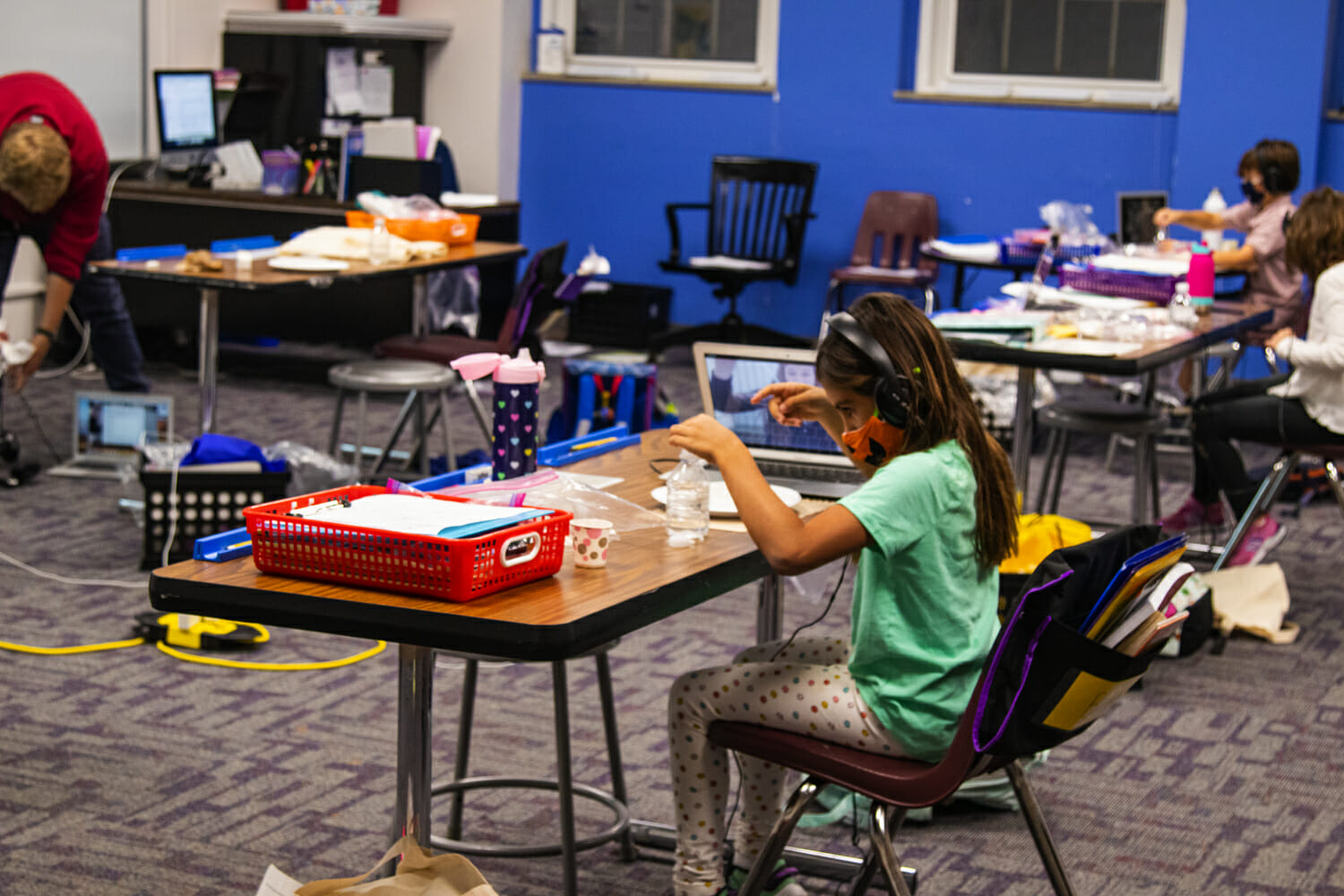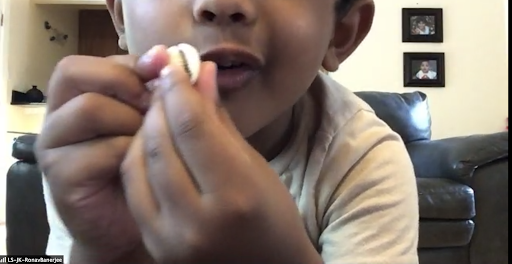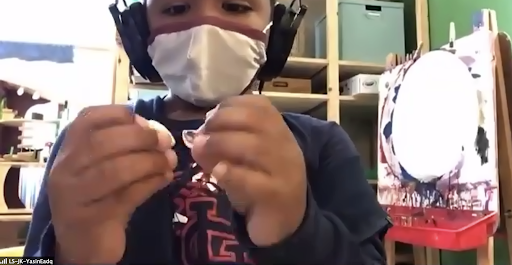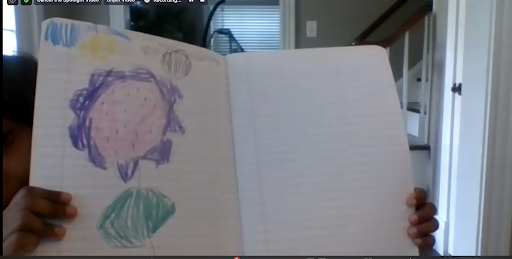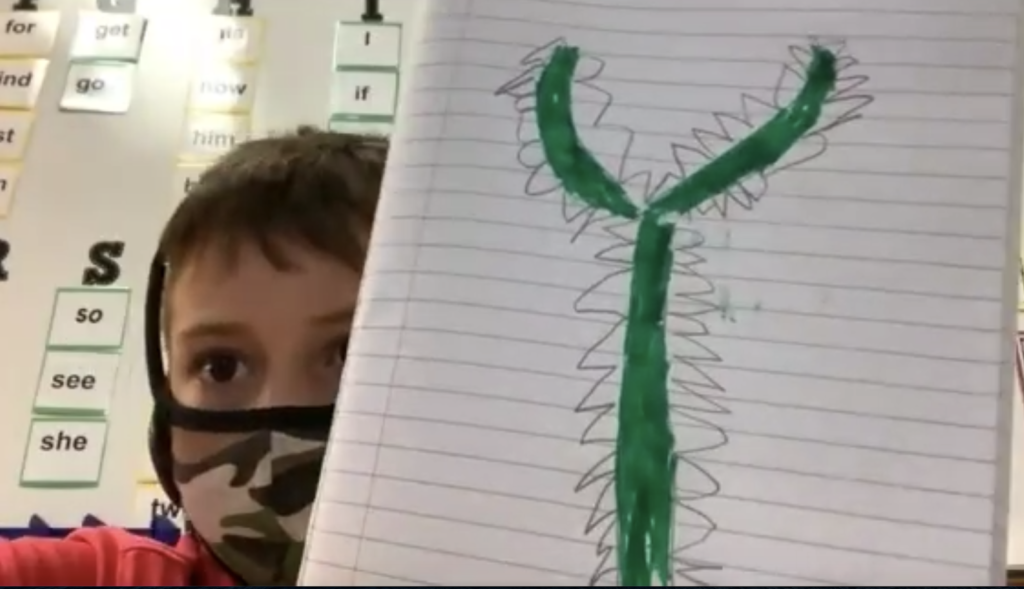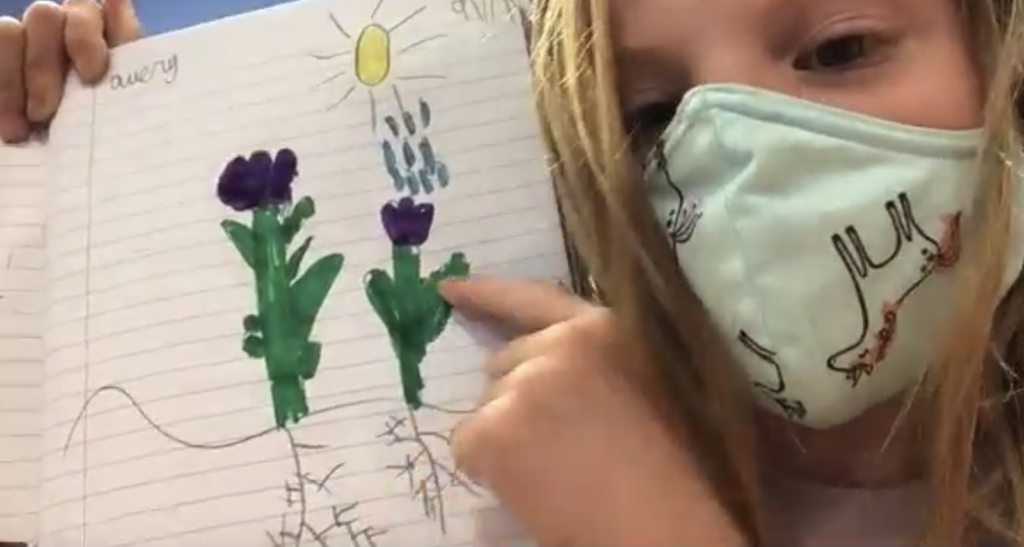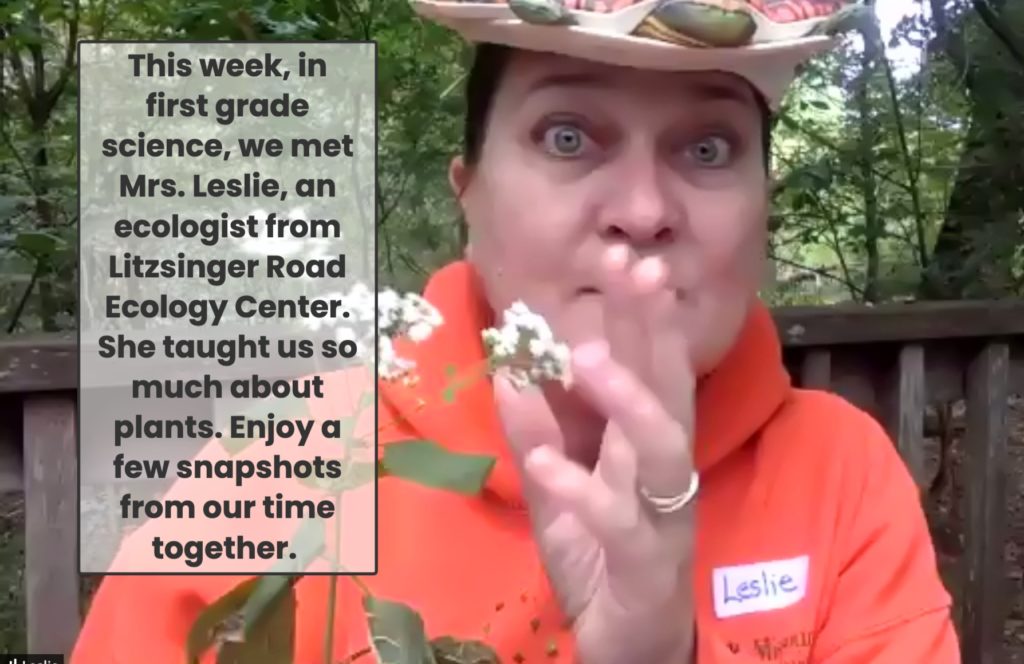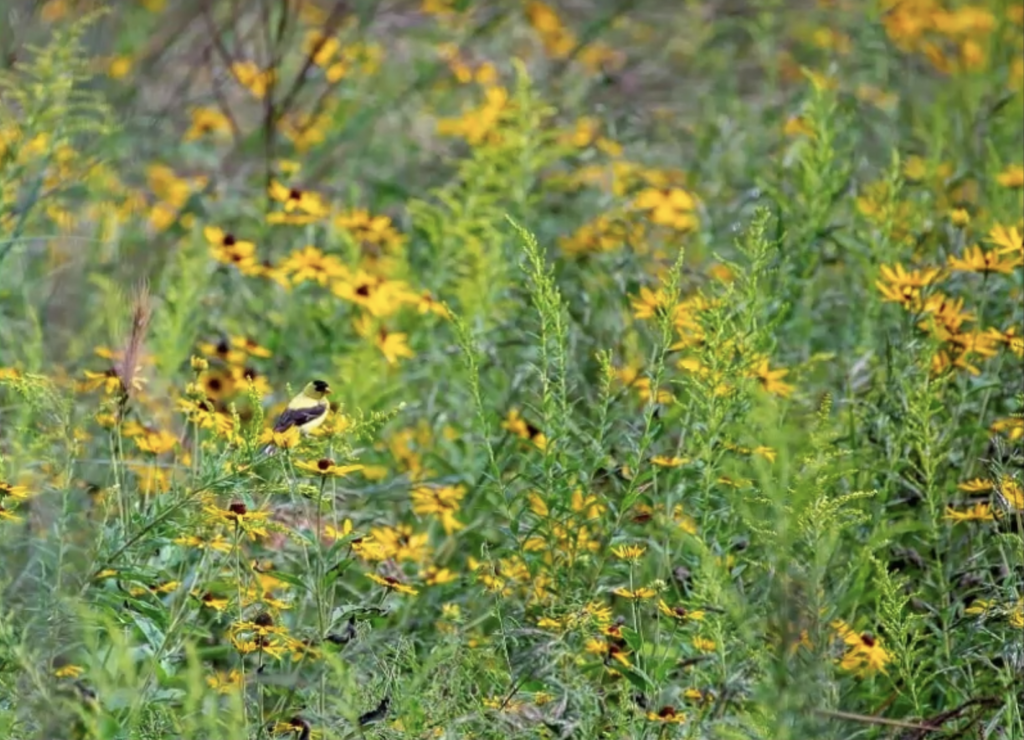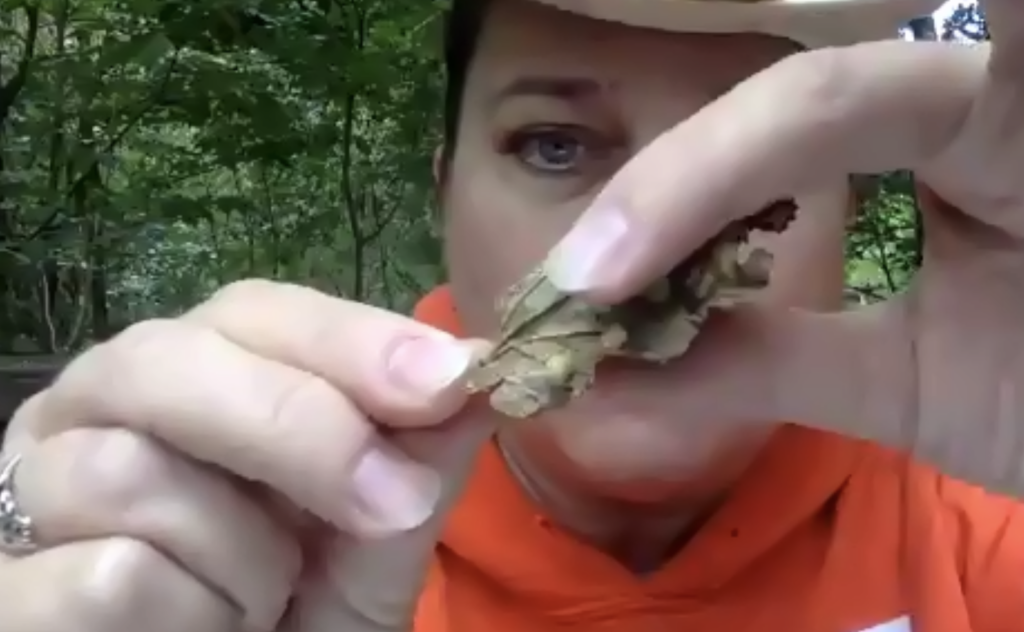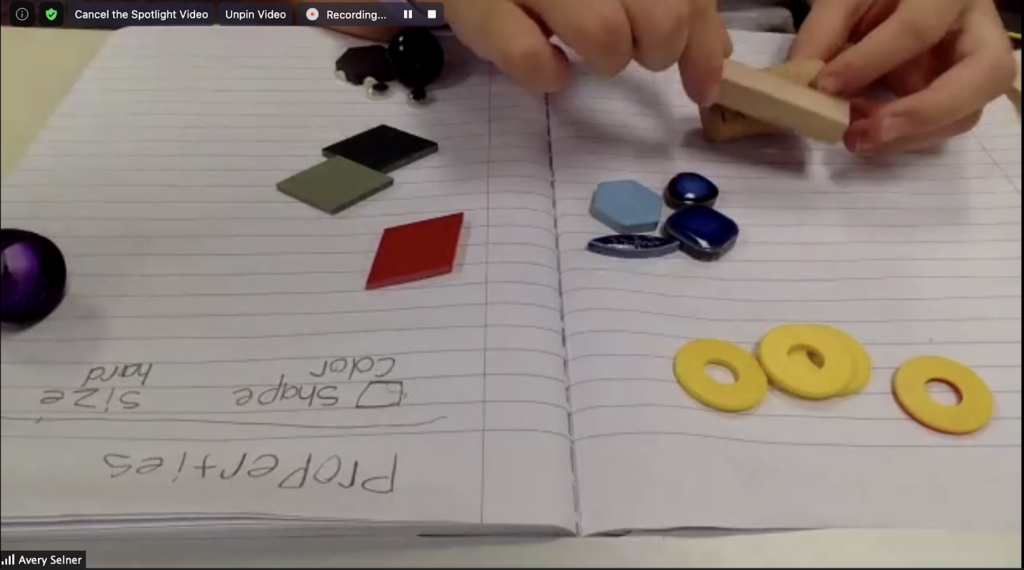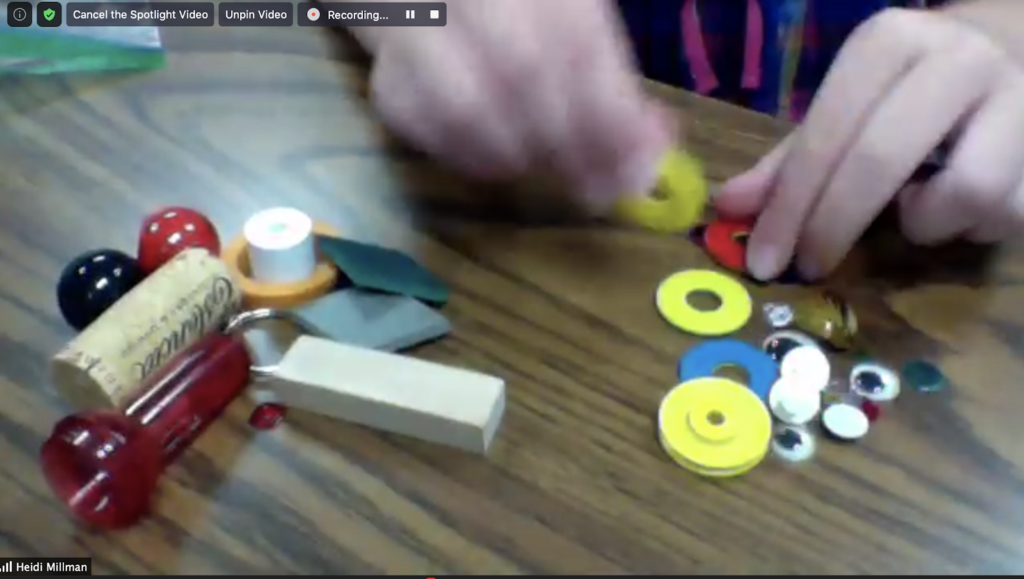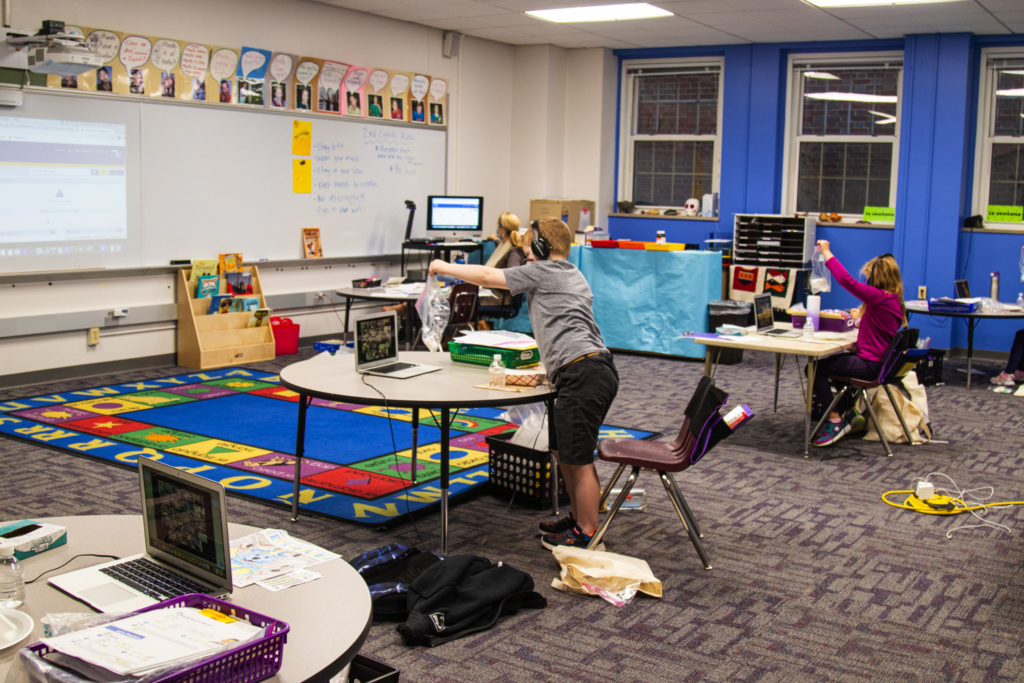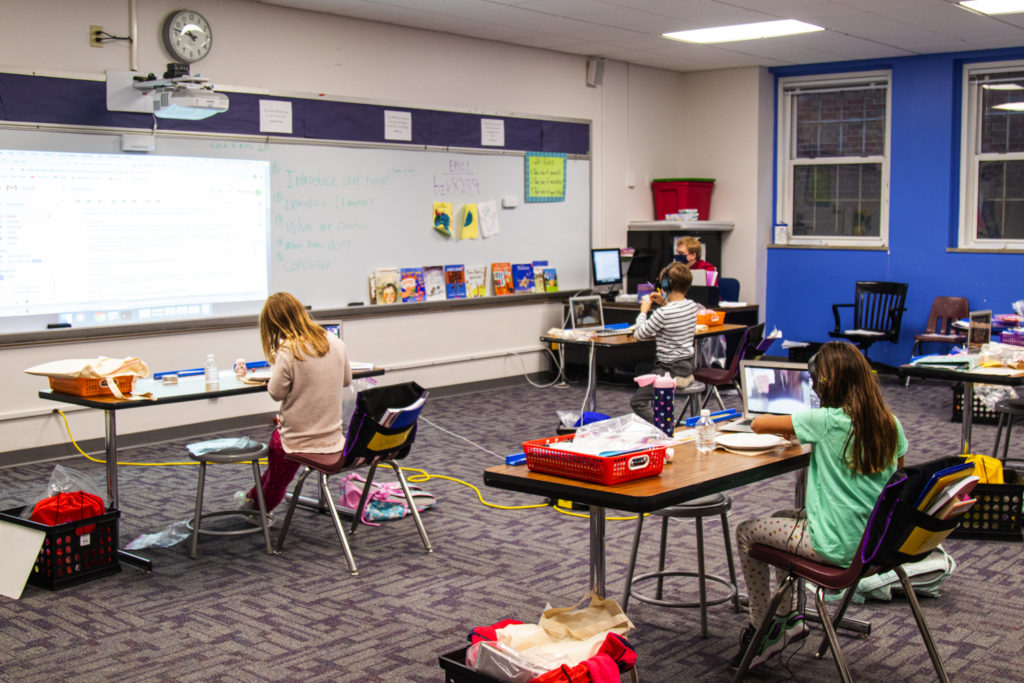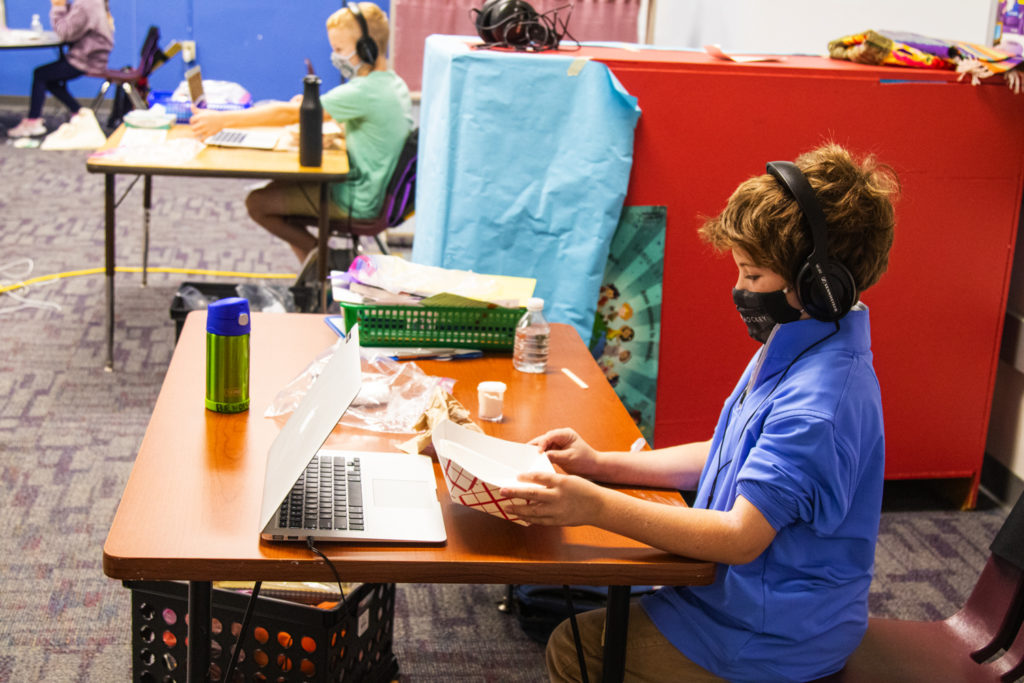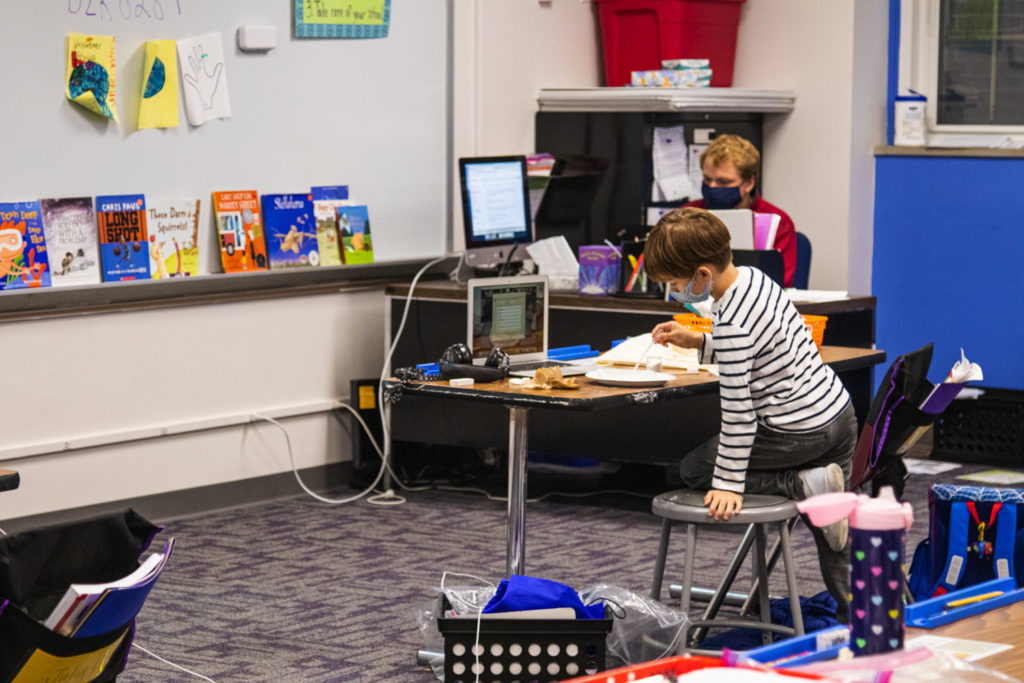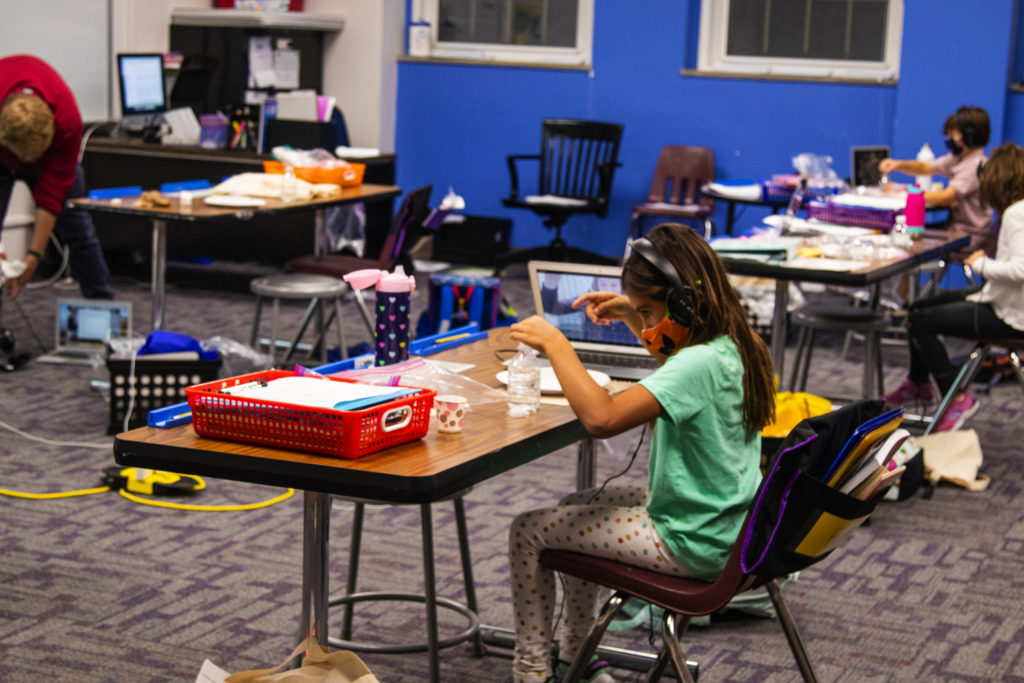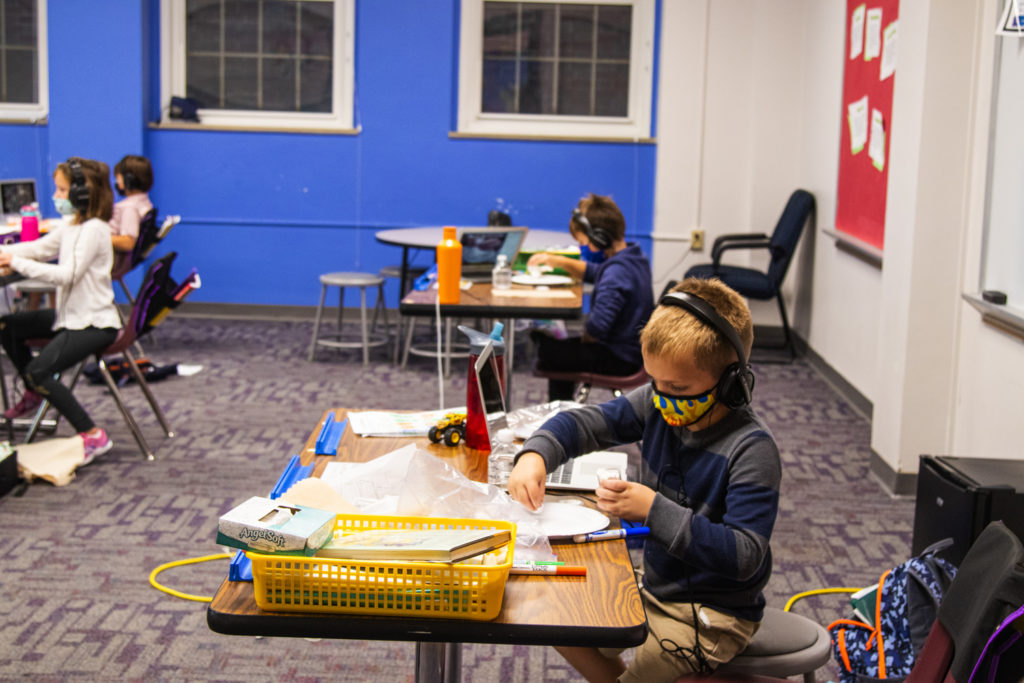Our Lower School Beasley scientists in Junior Kindergarten through 2nd grade engaged in learning units on geology, nutrition, plants, and matter with new JK-4th Grade Science Teacher Laura Pupillo. Students love their science kit bags, and the activities and lessons inspire curiosity and passion for the scientific world.
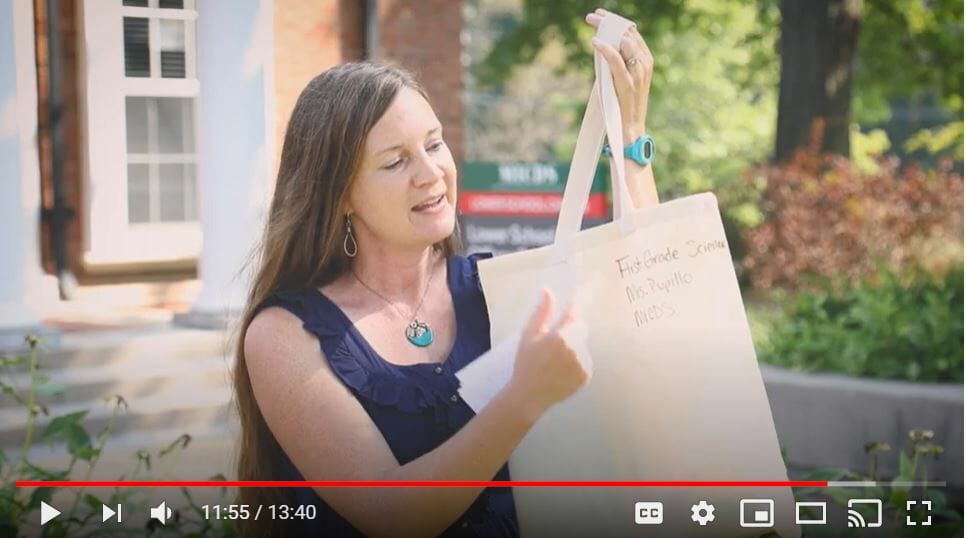
In Junior Kindergarten, our young scientists have been studying the many branches of science. This week, they became budding geologists through rock exploration. One of the most interesting conversations in this study was centered on the question, “What is the difference between a shell and a rock?” Pupillo is proud of their work and shared, «Students are learning that curious questions guide the best scientific discoveries.»
In Senior Kindergarten, students are becoming nutritionists in the «My Plate» learning unit! They discovered that all living things need food to survive and that the types of foods we eat are important. In this photo, our young scientists are using what they learned about My Plate to showcase their most favorite foods.
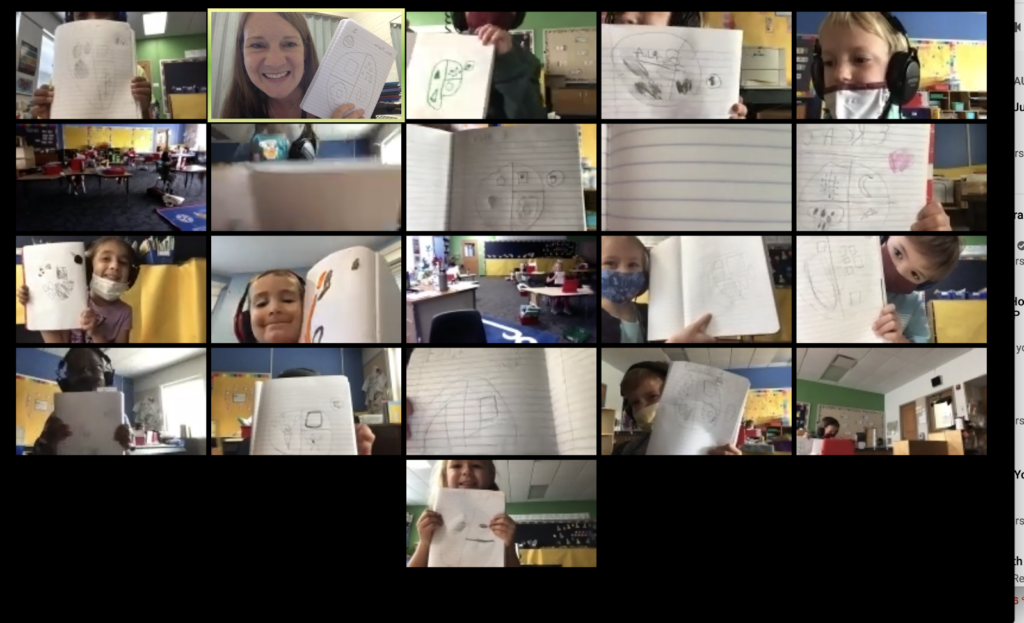
What makes up a plant? What do the different parts do for the plant? Ask an MICDS first grader, and they’ll tell you all about it. First grade scientists explored how specialized structures of plants do some pretty incredible things to help the plant survive. Pupillo said, «To put these new discoveries into practice, they became plant inventors and drew their own plants showcasing an incredible plant structure for survival.» Students were also treated to a virtual visit with Leslie Memula from the Litzsinger Road Ecology Center. Memula furthered the students’ knowledge of plants and provided a view of some of the plant and wildlife scenes from the ecology center.
What is matter? Second grade scientists kicked off their scientific thinking with that very question. Students used their inquiry skills to explore what matter is. They discovered that matter has mass (weight), takes up space, and has volume (a measurement). Through exploration, they learned that liquids, solids, and gases are all types of matter. Second grade scientists used properties to sort a variety of interesting solids, and this week, students experimented with non-Newtonian fluids. Through this learning, our young scientists got to feel first hand how some substances feel like liquids and solids at the same time.
In Lower School science, our young learners build a strong foundation of scientific knowledge and inquiry skills that will serve them well beyond their Beasley years.
